If you are visiting or new to the Bay (and Berkeley specifically) and are looking for an EA community, this guide is a useful place to start. It can be a difficult place to navigate for newcomers, and in this guide we (ES and Vaidehi, communtiy members of East Bay EA) hope to make it a bit easier. This guide is not a representation of the views of everyone in the community or any organisation.
This guide is most helpful if you’re already planning or seriously considering coming to Berkeley and want to get more context on the community and culture, rather than trying to convince you to come or be fully comprehensive. We mostly focus on the Berkeley community in this guide, but a lot of what we talk about is relevant for the San Francisco community as well.
We try to be pretty frank on the challenges and the negatives because we think it’s important to give an accurate picture of the community. That being said, Berkeley (and the Bay) is a great place with a really vibrant EA community! We hope you enjoy it and are welcomed warmly :) To encourage that, feel free to reach out to any local community organisers listed in the People section! We also recommend joining the group chats listed.
Overview
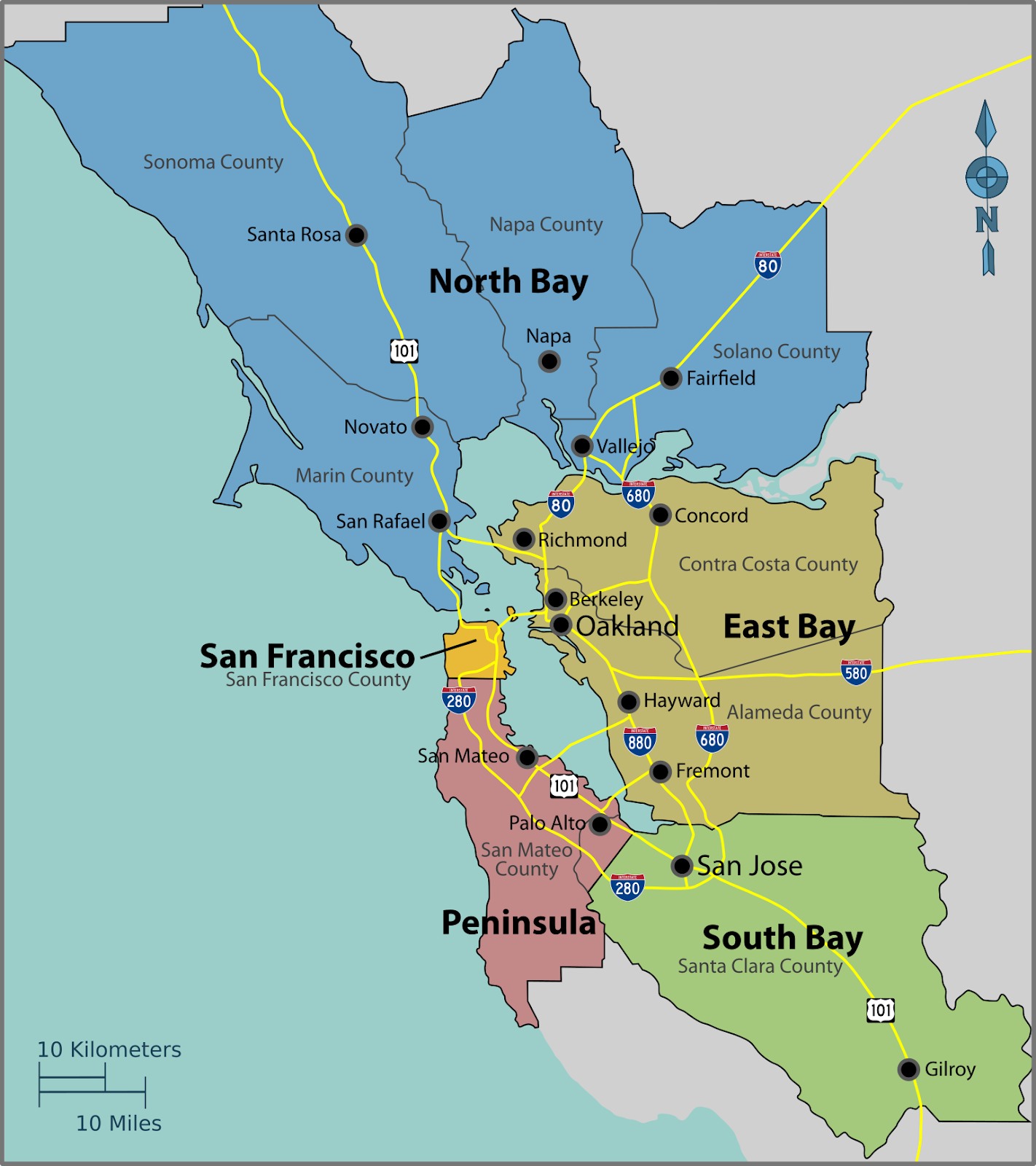
Here’s a map. EAs usually mean San Francisco or Berkeley in the East Bay (a uni town for UC Berkeley 45 minutes from San Francisco) when they say “the bay”.
Berkeley is particularly focused on technical AI alignment, housing organisations like Redwood Research, CFAR, MIRI, CHAI (at UC Berkeley) and Lightcone Infrastructure. As a result, there is significant overlap between the EA and rationalist communities in Berkeley, much more so than any other EA community (see more). Generally, most senior or engaged community members in Berkeley (and many in SF) are longtermists and work on AI safety.
Many longtermist EA programs in summer of 2022 are being hosted in Berkeley and bring in people from all over, such as the SERI MATS program and the EA Communications Fellowship.
The San Francisco community is overlapping but distinct, with relatively less rationalists and AI focused people. Organisations who have offices in SF include Open Phil, GiveWell, Founders’ Pledge, and some EA startups like Mission Barns (alternative meats) and Momentum. OpenAI and Anthropic also have offices in SF.
The Bay is a major hub because of founders’ effects (and ‘funder’s effects’) - several historically important founding communities and organisations of the EA movement were founded here / or are based here for many years. This includes rationalist organisations like LessWrong, CFAR and MIRI in Berkeley, and separately GiveWell in San Francisco. Find links to community pages here, advice about moving to an EA hub here.
Culture
The EA culture in Berkeley is influenced by the communities it is a part of—the rationality, silicon valley / tech communities. Most people are very passionate and dedicated longtermists who tend to take existential risks very seriously and/or have short AGI timelines. There can be a “doom-y” vibe (sometimes in social settings as well, although you can find events that are more fun). Below is an incomplete list of some aspects of the community that might be important to contextualise your experiences:
The community in Berkeley is overwhelmingly longtermist. You may feel alienated if you don’t hold these beliefs, or find it more difficult to find lots of in-depth conversations on other cause areas because people are primarily interested in a few topics.
There can be a more intense work culture in the Bay, with high variance. For some people it’s normal to work long hours and come in on the weekends. This can be really motivating and inspiring for some people. But there can also be pressure to work a lot, and to some it’s overall good. However, you don’t need to do this if you don’t think it’s something that would benefit your work or health. It’s okay to have more than one goal.
Many EAs are part of the rationality community. One norm is that they have more of an ask or tell culture: they can be very direct and open which may come off as rude if you’re not used to it. If you have time, familiarising yourself with rationality might be a helpful (and useful) thing to do.
The community is not diverse (even by EA standards). The Bay community is very white / male, in part because of the focus on technical AI safety work. This can be a bit disconcerting at first, but people are generally pretty friendly.
Many people value their time very highly in the Bay (and are quite busy). As a result, they often choose to funge time with money, and the wealth culture might be a bit of a culture shock at first. If you visit the longtermist coworking spaces you’ll notice they are well-stocked, have meals fully provided, nap rooms, etc. Many EAs will commonly refer to the value of their time and how it impacts their actions (ex. Ubering instead of walking).
Many EA or rationality community members in the Bay Area community are polyamorous (or poly). If you aren’t sure and you might be romantically interested in someone, just ask! People are very transparent about this. (See also: the section on romantic relationships in this post on power dynamics). Many community members use Reciprocity for dating. Reciprocity is a website where you can indicate if you want to be friends and/or date your Facebook friends, and if the other person checks the same box you’ll see if you’ve matched.
The Bay has a high concentration of funders and EA organisations, so there can be some complicated social dynamics which are not clear to newcomers. Julia Wise’s (excellent) post on power dynamics in EA outlines some of these concerns, and are worth keeping in mind when you interact with people.
The community is pretty large and fairly decentralised as far as event organising goes, and there are many social events (such as open-invite house parties or gatherings) organised by community members (check out the links below).
One flipside of having many community members are already familiar with EA, a lot of EA / rationality context is assumed, and people often use jargon that may not always be familiar. Don’t hesitate to ask if you’re not sure what people are talking about—they’re often happy to explain! If you don’t have a lot of experience with STEM-heavy or technical conversations, some conversations may feel alienating or boring.
We strongly recommend reading Advice about Going to an EA Hub
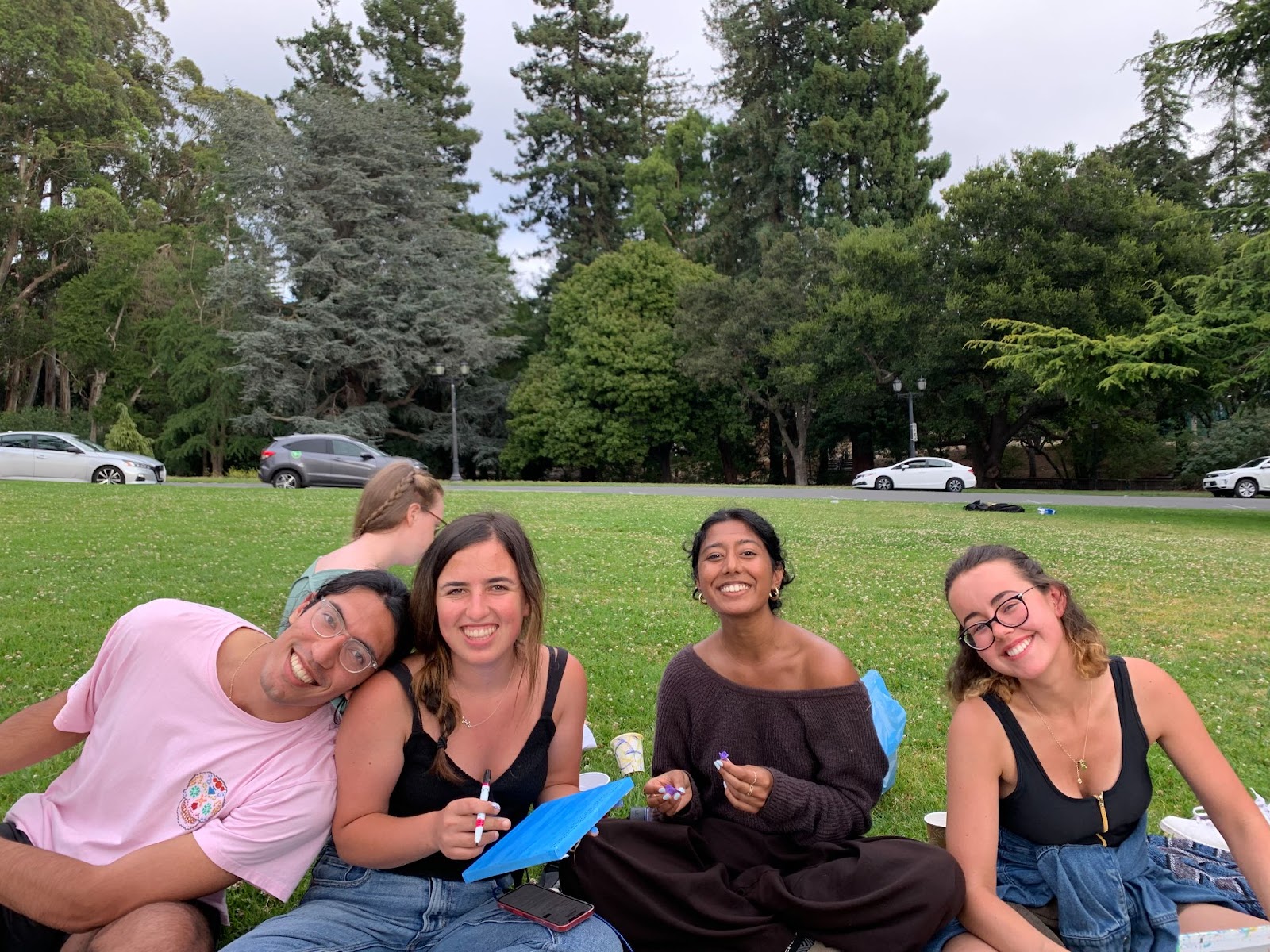
There is a slight distinction in the kinds of people in the Berkeley EA community and the San Francisco (SF) EA community, because Berkeley is a hub for technical safety work and San Francisco is more broad. The SF EA community is slightly less associated with the rationalist community and less longtermist / technical AI safety focused and has more professionals. That being said, there’s lots of intermixing in community members and culture between both cities.
Importantly, EA culture is not necessarily reflective of the overall culture in the Bay Area. For broader social context, the Bay Area is very politically progressive and wokeness is highly valued. There is a long history of advocacy spanning environmental, disability rights, US Anti-apartheid, Black Power, and slow food movements, as well as countless others. Even before its statehood, California has been famous for attracting immigrants, which is reflected today by its diverse demographics and large Latino and Asian populations (moreso in Oakland and SF than in Berkeley). Although the region is wealthy, it also has enormous and highly visible wealth disparities. The rise of tech is relatively recent, and is considered as somewhat “other” from the standard cultural identity of many long-time residents.
Meeting people
It can sometimes be difficult to get started in the Berkeley community if you don’t already know people, so you may need to be a bit more outgoing and take initiative to meet people if you don’t already know anyone. You can reach out to community members who’ve volunteered to be points of contact if you’d like some support!
You can meet people at East Bay EA community events in Berkeley (see the links below). This includes monthly dinners at both the Lodge & Burrow (two EA group houses), and picnics and hikes every couple of months.
There are also a lot of informal hangouts, parties and dinners at group houses too, which people might invite you to. Some of them are posted to the East Bay EA Hangout Facebook page.
Many EAs (and Bay Area people in general) like rock climbing, there’s a group chat (see below) you can join if you want to find climbing buddies. You can also post on the visiting the bay chats to find people to do activities with.
Coworking spaces are often good places to meet people over meals if you work from there or are invited as a guest.
Note: Right now (summer 2022) there are lots of EAs visiting Berkeley, and there are lots of events, meetups and more. We are not sure how much this will continue after the summer programs end, but expect that there will be some public / open events that will continue beyond this period of time.
(Longtermist) Coworking Spaces & Offices
There are 2 main offices that longtermist EAs based in Berkeley work from: Lightcone and Constellation. Both offices are centrally located in Downtown Berkeley, very close to the BART station (metro) and the UC Berkeley campus. We won’t share the public locations of either office for privacy reasons.
The offices are membership-based. You can apply to be a regular member, but are unlikely to get access as there is limited space and they are selective with whom they give access to. We are not sharing the application link for either office here. The acceptance criteria is not always legible, so if you don’t get accepted you may not know why. Both offices have guest policies for their members to invite guests to come visit, with varying rules. If you’re invited by someone, you can ask them for more details.
Lightcone is operated by Lightcone Infrastructure, the people who also run LessWrong (so, rationalists). They are focused on AI alignment and projects that they believe will contribute to alignment. Lightcone members include alignment researchers, longtermist community builders, and some rationalists. About ~40 people work from Lightcone in any given week and about ~140 people have access. If you’re not working on longtermist projects that the Lightcone team is excited by, you will likely not get access to Lightcone.
Constellation is run by Redwood Research. Aside from the Redwood team, which is about 30 people, they have a coworking space that is more targeted at organisations rather than independent researchers or smaller projects. Thus, Constellation hosts staff from Open Phil, ARC, the FTX Future Fund, CEA, AI Impacts, Atlas Fellowship, MIRI, Lightcone, Alvea, and GCP. Access to Constellation is typically more limited than Lightcone. Currently (as of July 2022) there is no application form, and they are mostly focused on supporting members from the organisations in the space.

What to do (that’s not work)
Attractions:
Nature:
There are tons of amazing nature things to do in the Bay—hiking, climbing, surfing and skiing. I’ll let you Google them (or use AllTrails or Berkeley Path Wanderers Association Resources for self-guided walks) but here’s a short list :)
East Bay Regional Park District - Berkeley amenities include lots of hiking, a small farm, and Lake Anza
Fire Trails (up in the hills near Berkeley, accessible by foot)
UC Berkeley Botanical Garden and the Tilden Botanical Garden
Coastal Access around Eastshore State Park, including walking and bike access as well as weird art at Albany Bulb
Crescent Lawn (right at Downtown Berkeley) for some close-to-city park-ing
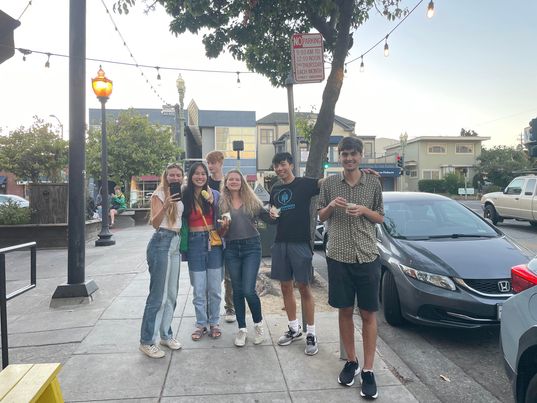
Best Sunset Points:
Lawrence Hall of Science for a mountain top view
Albany Bulb for an ocean view
Indian Rock Park for a bouldering spot with a beautiful sunset
Food:
Check out Eating in Berkeley by Aris Richardson
Museums:
Art and culture: SFMOMA, Oakland Museum, BAMPFA, DeYoung & Legion of Honor
California Academy of Sciences
Coffee/Tea Shops (good for working):
Caffe Strada
Asha
1951 Coffee Company
Caffeinated
Logistics
Housing
Start planning your trip in advance (>3 weeks) if you want to find good housing options, even for a short trip. The Bay Area is expensive, so make sure you have your finances in order before coming.
Rent is usually $1600 - $1800 for a single and $900 - $1200 for a double (aka sharing a room). (These are prices for places within a 15-minute walking distance from Downtown Berkeley, where the 2 main longtermist coworking spaces.)
People generally live in group houses or flats of 3-9 people, which often have open rooms for short- and long-term stays.
Sharing a bedroom is somewhat typical for young people (e.g. students) here due to high housing costs, this may surprise non-Americans
There are these Facebook groups where housing and (sometimes free) couch-surfing openings at group houses are sometimes posted and you can post a “looking for”-post.
Note as of Aug 2nd: the Lodge in Berkeley is booked for several weeks and at capacity for guests, please do not reach out to us regarding housing.
Transportation
Trains: BART is the Bay Area equivalent of a metro/commuter rail system, MUNI is the SF metro system, Caltrain connects to the South Bay
Buses: AC transit offers an extensive bus network. Buses can be a helpful transit option in the US—train infrastructure is less well developed.
A Clipper Card will let you pay for access to all local transport, and even the cable cars in SF!
While bike infrastructure is improving and there is a nascent cycling culture in the Bay, bike accidents and theft (especially back wheels) can also occur. Wear a helmet, use lights, consider a safety vest, and always lock your bike.
Berkeley is quite a small and walkable city, SF is also walkable but can get very hilly and steep.
Visitor Visas (for casual visits / attending EAG(x)’s)
This is not official legal / immigration advice, if you’re uncertain on any of these points, contact a lawyer. If you’re participating in a retreat or program, talk to the organisers about the relevant visa for that program.
Lots of countries participate in ESTA—a visa waiver program for tourism or business travel which takes up to 72 hours to process (we recommend applying farther in advance). If you can’t get an ESTA, it could take several months to get a visa. Apply as soon as possible, even if your exact travel plans are not set.
Just a note: non-US citizens are not allowed to work in the US without a visa that permits work authorisation.
At the border:
Border officials will ask you about the purpose of your trip. You can say that you’re visiting friends in the Bay, and (if they ask) that you met them through a nonprofit conference (a simpler way of explaining EA events) or a community that is trying to improve the charity landscape.
You’ll need to show you booked a return flight within the correct time frame. Book a fully refundable / changeable flight if your dates are uncertain.
In general, never do or say anything that could be construed as an intention to stay in the US permanently.
Climate and Geography
Weather
The Bay Area has a mild, Mediterranean climate with little precipitation and moderate temperatures year round. Low humidity and dry heat means the shade is often much cooler than the sun. Also, it’s usually sunny, so the weather in Berkeley is epic.
Evenings and mornings can be surprisingly cool, breezy, and damp because of the role sea breezes have in transporting fog in and out of the Bay. Carry warm layers even when it’s warm and sunny to avoid being cold in the evening. Common layers include thin merino/cashmere sweaters, down puffers, fleeces, and cotton sweatshirts. Heavy coats are usually not needed.
California is further south than most of Europe, and typically has much higher UV index. Protect yourself from UV exposure and sunburns.
Earthquakes
Keep in mind this is very unlikely, but if you experience an Earthquake:
Don’t panic
Get underneath a heavy object like a desk, bed, or table. Protect the back of your neck with your hands and wait until the shaking stops.
Most Earthquakes are small and end quickly, if everyone is ok and you don’t see any damage (e.g. cracks in walls, broken glass, etc.) then it’s probably safe to continue with your day, but be conscious this could be a foreshock. If you haven’t already, you may want to locate sturdy shoes, water, warm layers, or other easily accessible items on this list.
If things are not obviously ok (you experience “The Big One”), go outside quickly and safely and look for an open area clear of things that can fall (e.g. buildings and power-lines) such as a park. Seek medical attention if needed.
Be prepared to not return for several hours or potentially days. If you’re able to, bring emergency supplies and turn off your home’s gas and electricity if you can. Wait for guidance as to when it is safe to return and expect that cell coverage could go down
Wildfires
California has a natural fire season that is part of the state’s ecology, but have become more frequent and intense due to fire suppression and climate change. Do your part by following local restrictions on when and where campfires are allowed, and always extinguishing them properly. If visiting California between May and November, keep in mind the possibilities of wildfire air quality impacts even in urban areas.
Check local fire activity before you plan trips to rural or wilderness areas. See the CalFire incident archive. There is rarely an active reason for concern related to large scale smoke transport until there are incidents around or above 50,000 acres with low containment.
Monitor air quality using 24 hour air quality forecasts from NOAA, and PurpleAir or AirNow for real time air quality. Lower AQIs values are better, anything below 100 is alright. Isolated high numbers usually happen if in a local geographic low or downwind of a large intersection or highway. When air quality or smoke is bad, invest in air purifiers and find ways to seal windows.
Be prepared for evacuations by having a go-bag with essentials you can grab if you do need to evacuate on short notice.
Useful Links
Online Groups & Chats
Bay Area EA Slack- general slack for disucssions, with channels for visitors, social activities and housing
Messenger Chats (join via mobile, or anyone in the group can add you!)
Climbing (Invite link)
EA / Rationality Housing Board—for long- & short-term housing
UC Berkeley EA Slack (+ Website + Facebook Page for events)
(Mostly) Events
Bay Area Facebook group—a general group for Bay-area based EAs
East Bay EA Hangout Facebook Group—an informal group for EA & social events in the East Bay
East Bay EA Facebook Page (East Bay EA Forum page)
San Francisco EA Facebook Page (San Francisco EA Forum Page)
Useful Apps
BayWheels: renting bicycles
Clipper Card (or add to apple wallet): for BART and buses
ZipCar: for car rentals
Superpedestrian or Veo: for renting e-scooters
Acknowledegements: Thanks to Luise Woehlke for the original version of this guide, and countless others who gave feedback and added in useful information on drafts. If you have suggestions for this guide or other feedback, please comment or message us.
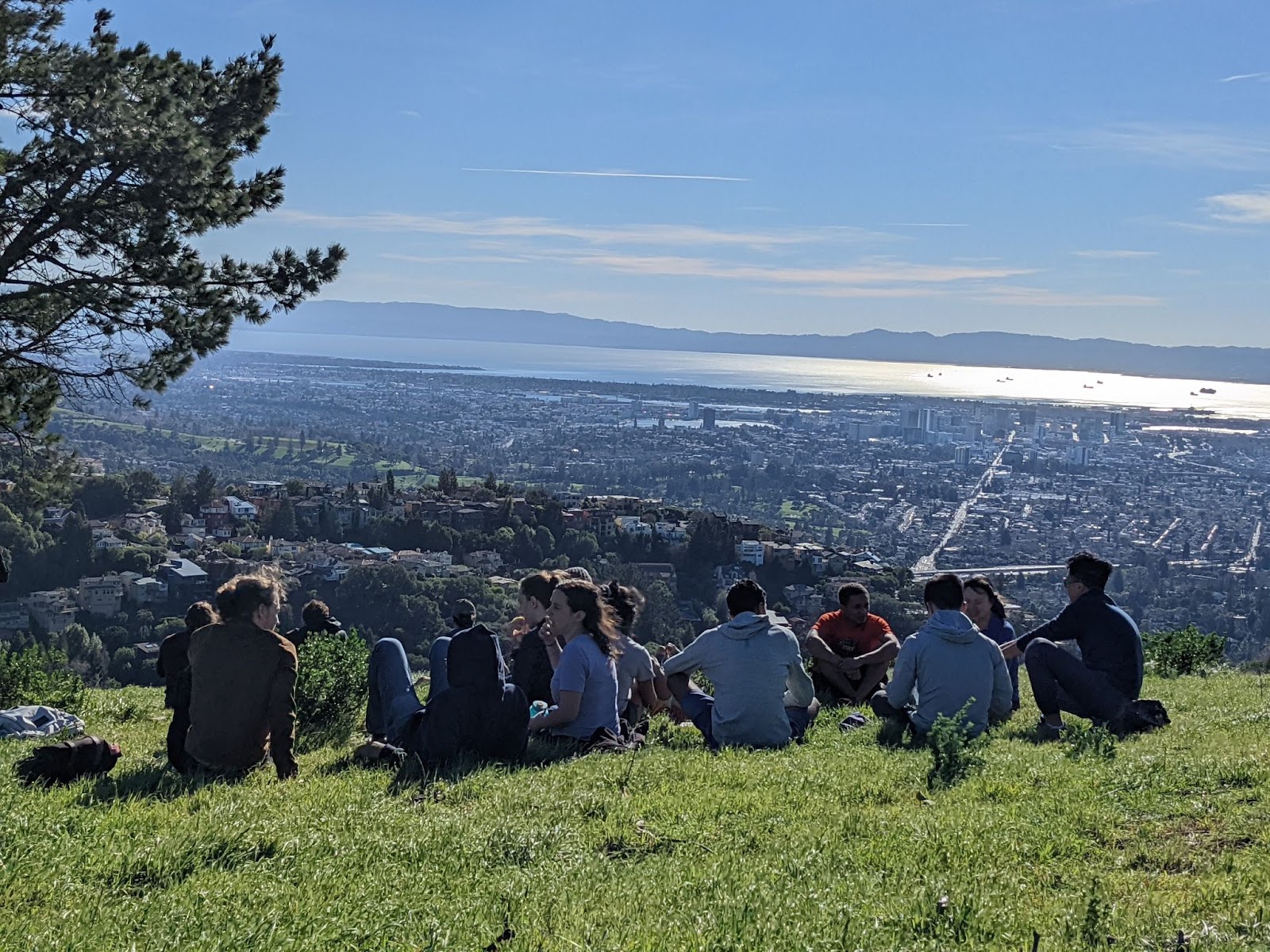
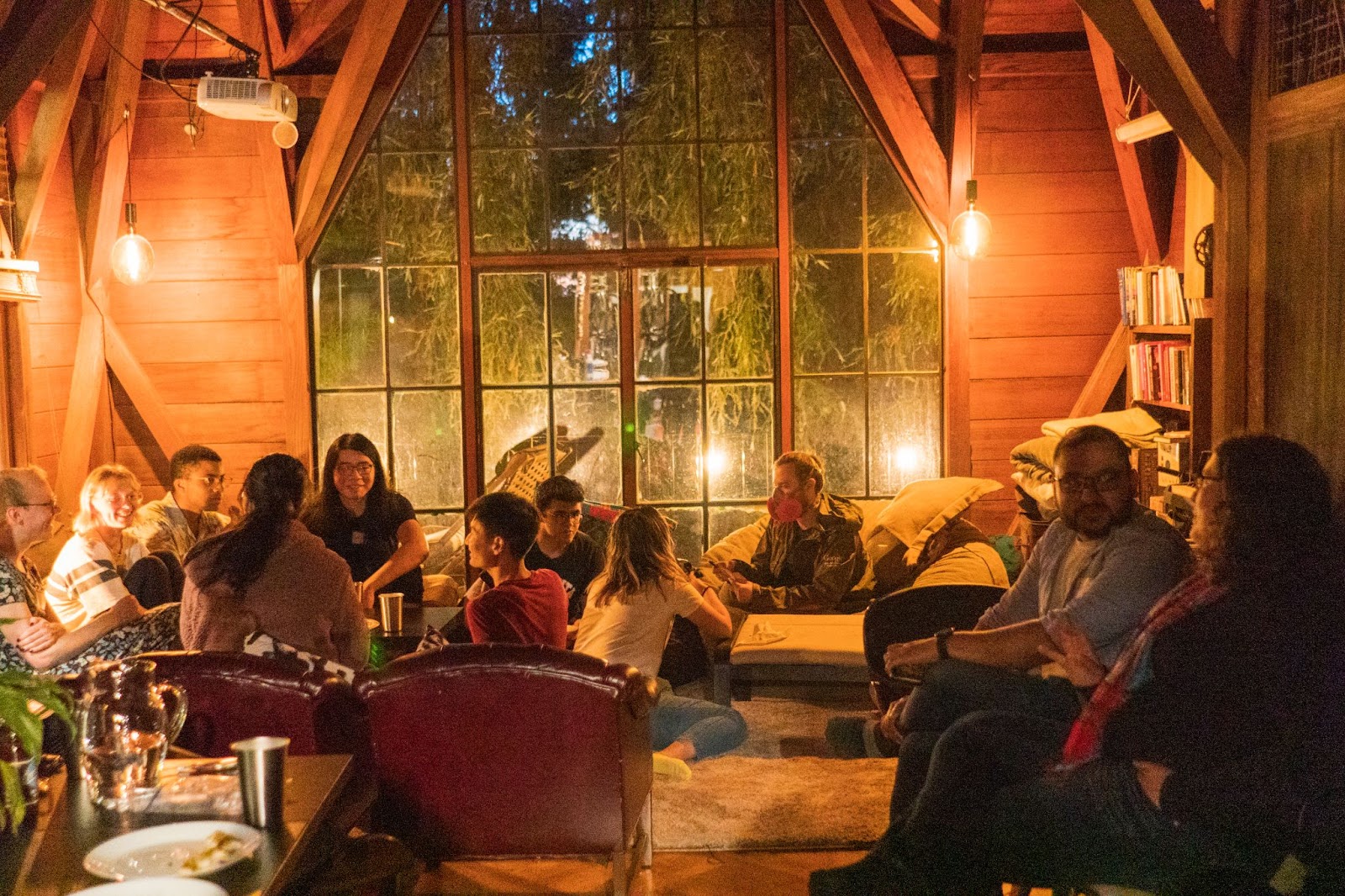
Streets in small parts of San Francisco, near the downtown, are very, dirty and occupied by unsheltered people. The environment is very surprising to some people who have not been to North America before.
In these neighborhoods, there are nice hotels/hostels that are cheaply priced and near BART or public transportation.
In the past, some EAs, not from North America, have not been aware of the above. Because SF is very expensive, and they wanted to be frugal, some have booked cheaper accommodations and then felt very uncomfortable, especially single people or women at night. This probably affected their experience of SF and the events they were going to.
Suggestions:
Check out reviews for the accommodations on line. If people mention “The hotel is nice but is in [neighborhood X]”, it’s worth Googling the mentioned neighborhood to see what is going on.
Ask friends who live in SF.
Note:
Note many Americans/locals don’t like to draw attention to the situation, because it’s chronic and ongoing, it’s intractable and complicated, the discussion involves cultural viewpoints many disagree on, and Americans often feel guilty/conflicted by inequality. As a result, many Americans or locals won’t talk about the issues much and when they do, they will talk about it indirectly.
Homelessness is very visible, but the causal relationship between the wealth in SF and homelessness is unclear. San Francisco literally spends over $50,000 per homeless person.
Homelessness is visible but touches on a much deeper problem of land constraints. These constraints of land (or housing laws/NIMBY) is a historically bizarre situation, I think there’s a small subfield in economics which argues tech’s establishment in the Bay Area, is limiting GDP/innovation by many billions of dollars. X-risk people have said this is harming X-risk.
Good post! A nit:
I think of these only CFAR was founded in the Bay? GiveWell was founded in NYC, MIRI (then SIAI) in (I think) Georgia, and LW as a remote collaboration.
Since GiveWell and MIRI moved to be closer to their funders we could call this “funders’ effects” ;)
Also, the Bay Area is probably the top metro area in the world for AI capabilities R&D (because of Google, OpenAI, Meta, various ex-Brain startups, Stanford, Berkeley). So if starting from scratch, there’d be a good reason to put AI Safety orgs there.
Good point! I expect it would have ended up as the main AI hub even if MIRI hadn’t moved there.
Ooh a fun history less! Thanks! I’ll edit it :)
Thanks for that context Jeff!
A few other recommended attractions, from someone who lived in Oakland and Berkeley for a few years:
Indian Rock Park (Berkeley): an incredible sunset point, one of my all-time favourite parks, great for a rock scramble or a picnic or serious bouldering if you’re into that
The Pacific Pinball Museum (Alameda): If you like pinball at all you should go there. You pay entry and then their like 100 pinball machines are free to play.
The Exploratorium (SF): Highly interactive science museum. If you go on Thursday night, you won’t have to elbow children out of the way of the exhibits. The tactile dome is a very unusual experience
The Chapel of the Chimes (Oakland): Sombre and moving crematorium in Oakland. One of the most beautiful (in a sublime / sad way) places I’ve ever been.
Berkeley Path Wanderers Association Resources for self-guided walks
(ETA: some of these were already in the Bay Area Attractions spreadsheet you linked)
Thank you!!
I live in Berkeley and the amount that I learnt from this is incredible. Great guide!
I’m glad it was helpful! :)
2025 updates on coworking spaces:
Constellation has a website, and a visiting fellows program. Short term visitors can email them: https://www.constellation.org/
FAR Labs, another AI safety coworking space in Berkeley, is open for short-term visiters and long-term memberships, see the application form on their website.
Lighthaven hosts programs such as MATS and various events.
Lightcone closed afaik?